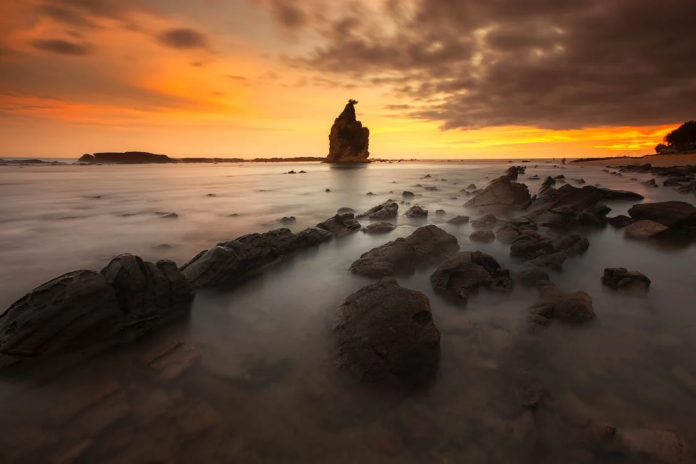An accurate definition of a seascape
A type of landscape photography known as “seascape” includes the sea and its surroundings in the scene. Similar exposure techniques are used in both landscape and seascape photography, however, the focus is considerably more on the water in the latter.
Although it may appear that seascape photography is a uniform kind of art, seascape photographs are amazingly diverse and contain a wide range of seascape photography images.
There are seascape photographs that are serene with calm waters, moody and dramatic with strong, crashing waves, and even inspiring seascape photos. The water is an endlessly captivating subject, in part because of the fact that it is never stationary, which is why photographers find seascape photography to be so interesting.
Prioritize safety When photographing the sea, safety always comes first.
The sea is strong and might be hazardous for photographers despite its beauty. Check the sea’s swell and tide before you start shooting to secure your safety and to determine whether the sea is likely to recede.
Your safety depends on knowing this knowledge in order to avoid becoming stranded in the middle of raging waves or trapped beneath a cliff.
Additionally, you should put on some boots with strong traction because the area by the sea is really slick and you risk falling. Additionally, stay away from the crashing waves because they have the potential to knock you to the ground and drag you into the water.
Additionally, you should have a plan for getting off the boat in case the seas get too rough or if you were caught off guard by rogue waves.
Weatherproof your equipment.
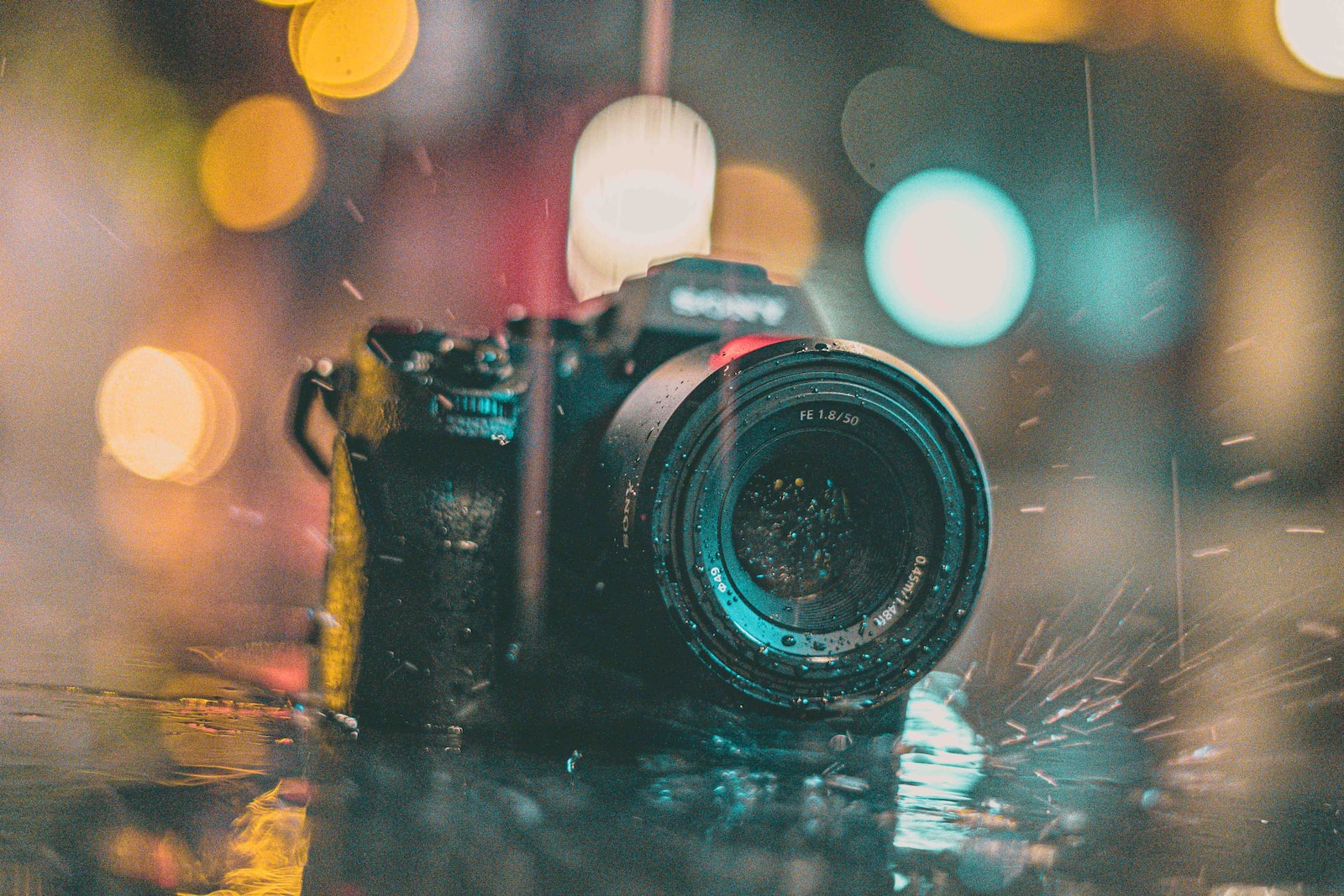
For seascape photography, you should weatherproof your equipment because it’s possible that everything will get wet. You may purchase weather-sealed cameras that can withstand sea spray. Even though your camera is waterproof, you should clean the body after shooting to avoid saltwater damage.
If you’re utilizing an existing camera, you should use a waterproof camera cover to shield it from the weather. As water droplets will taint your photos, you should also bring a few microfiber wipes to clean your camera’s lens and filter.
It is challenging with tripods because almost all of them will degrade when exposed to saltwater, even the most costly ones.
Wash your tripod with fresh water if it gets wet from the sea.
Consider purchasing a tripod specifically for the sea if you intend to regularly picture seascapes; this will keep your best tripod dry and at home.
Use manual focus
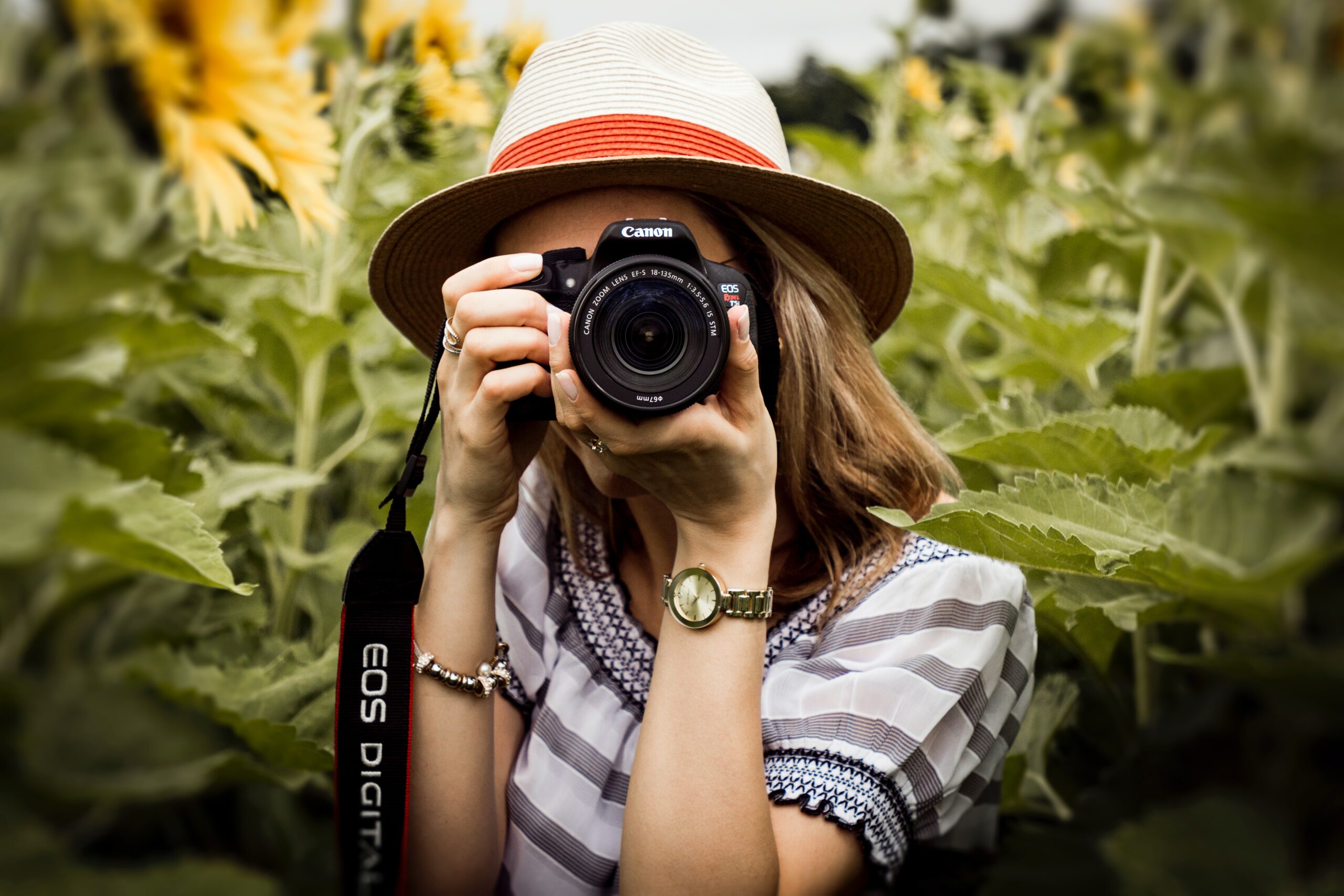
For more artistic control over your photos, you should choose manual mode when you shoot.
The very best examples of seascape photography were all taken in Manual Mode. Try this, as you may expose your photographs to the ideal level, to catch the beauty of the seascape and all of its nuances.
In order to preserve all of the image data, you should shoot in RAW rather than JPEG, which will compress the file, lose some of the data, and make it more difficult to edit.
Make use of a neutral-density filter
When taking pictures of water, having some fun with a Neutral Density (ND) filter is a good idea. An ND Filter reduces the depth of field when the light is intense and blurs the motion of water.
It does this by filtering wavelengths of light equally from entering the camera in measured proportions. When the waves are moving, an ND filter can help you take some interesting pictures.
Try taking long-exposure pictures
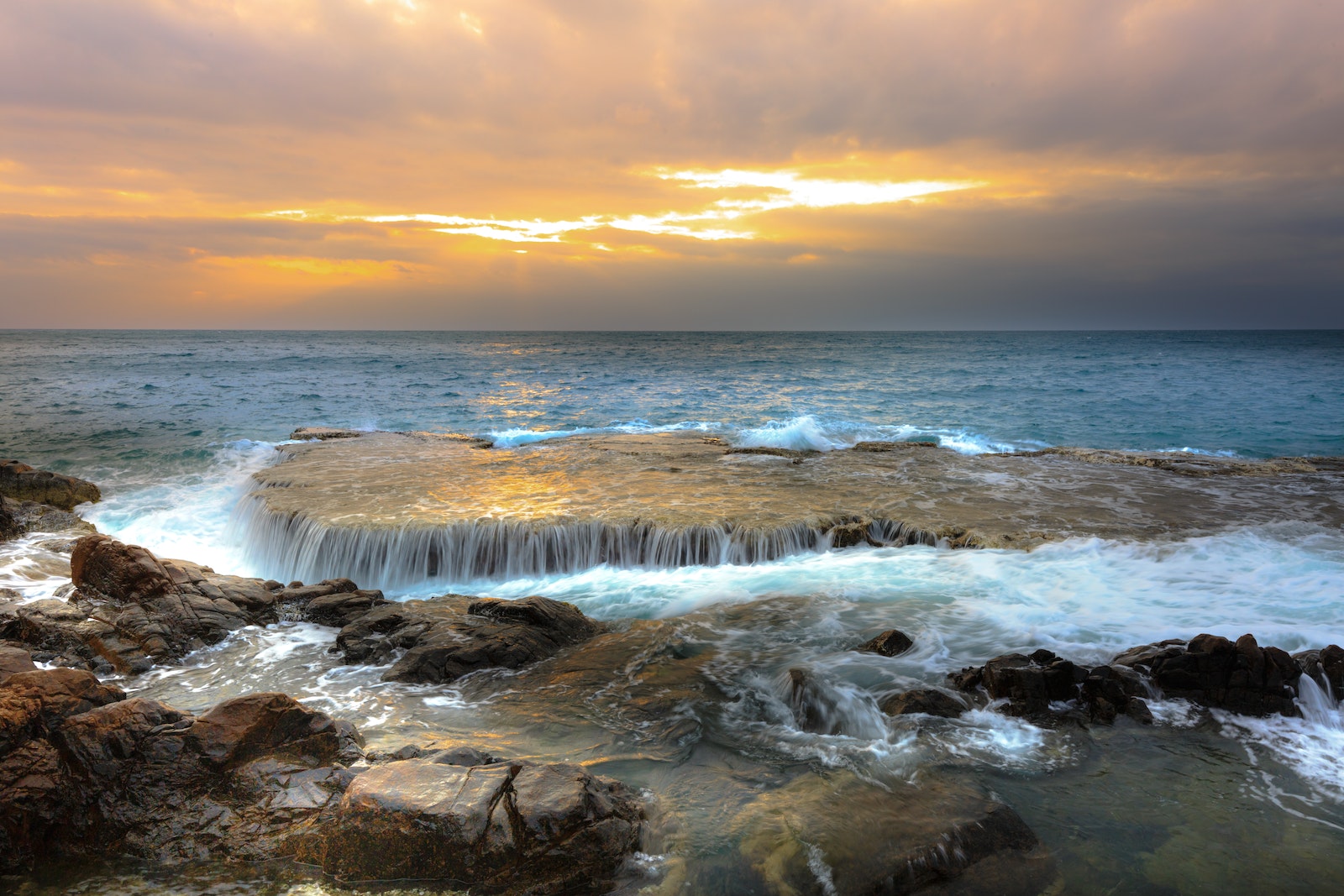
Photographing seascapes with long exposures can be a fun endeavor. In long-exposure photography, the shutter speed is sped up to give the sensor a longer exposure to light.
For seascape photos, 10 to 15 seconds should be adequate. Long exposures would result in silky, ethereal stretches of sea and cloud trails in seascape photography. When the sea is quiet as opposed to when the waves are crashing, long exposures typically seem nicer.
Keep the aperture shut
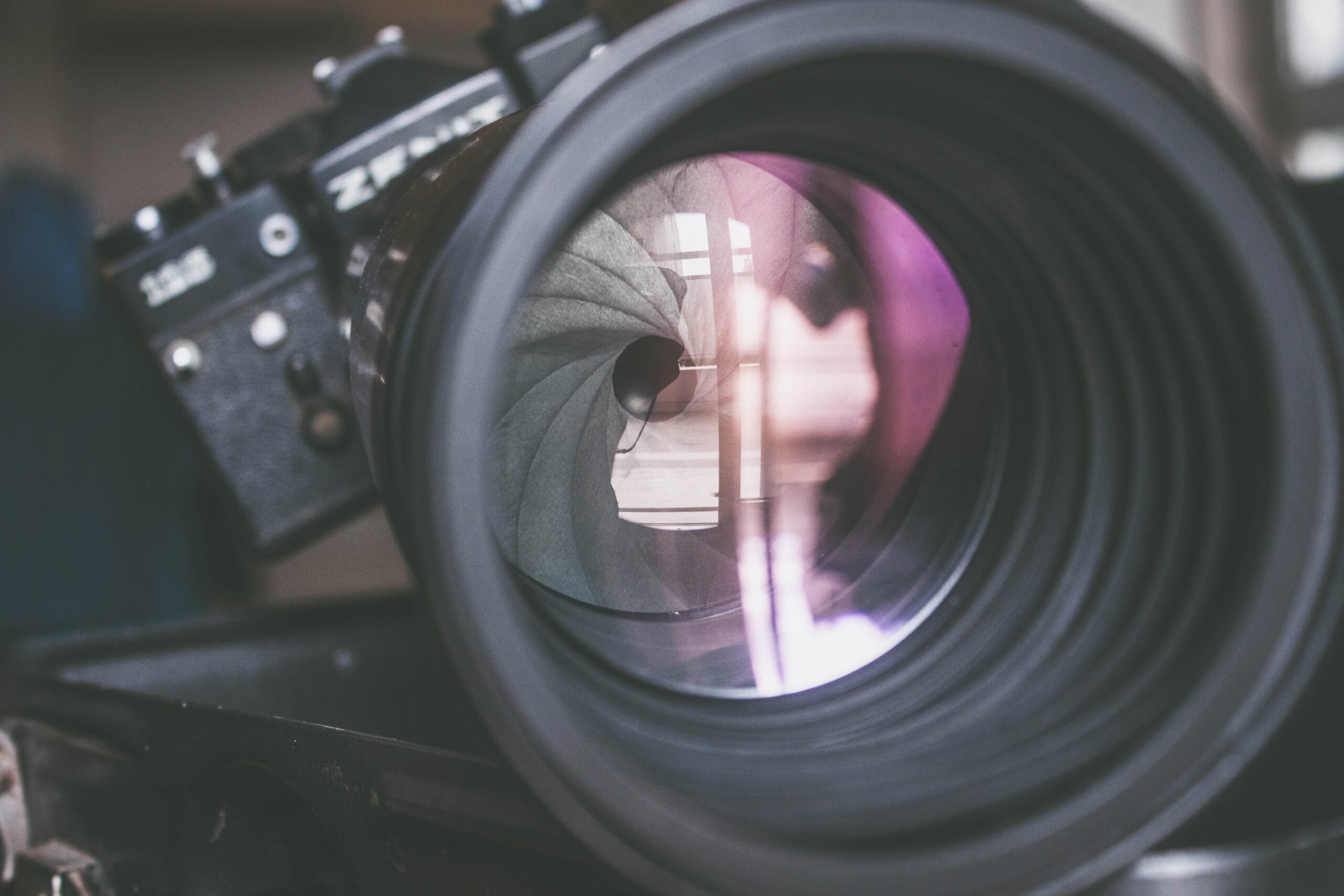
For seascape photography, it is suggested to keep the aperture closed. Similar to other types of landscape photography, you want to attain a greater depth of field to keep the foreground and background in focus and the subjects of the photo sharp and exact.
Utilize the sea to make your composition better
When you photograph a seascape, including waves is the best method to easily improve the composition because they add leading lines and movement to the scene.
Your main subject should be the sea, but a compelling foreground is also crucial to the composition of your picture. Look around to see if there are any unique rocks, cliffs, or flora that could serve as a framing for the picture.
Conclusion
A relatively dreary day can be made tolerable by looking for interesting details in the rocks, the people, and the sand. Seascapes come in a broad variety.
A photo that captures motion is always in demand due to the dramatic effect it produces. The use of reflections in water photography is fantastic.
Use neutral density and polarizing filters as needed; it’s much simpler than using Photoshop later. Keep in mind that taking pictures of the sea will not only result in stunning pictures but will also be a calming activity.
![]()

